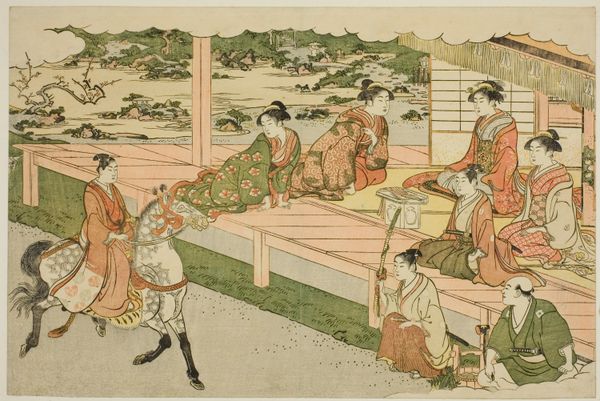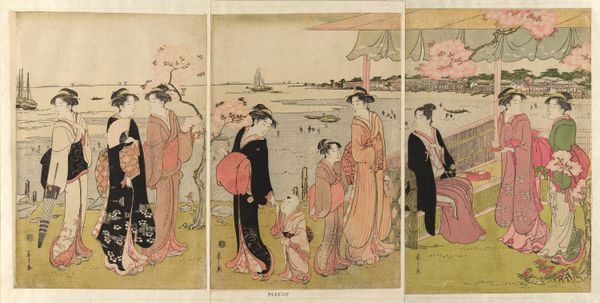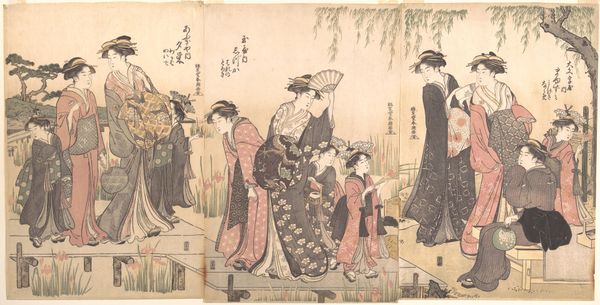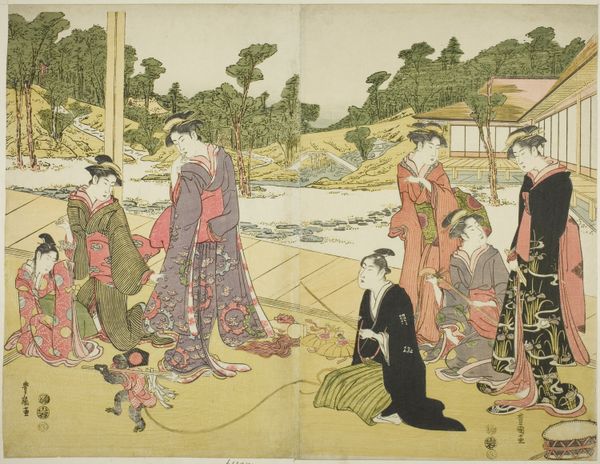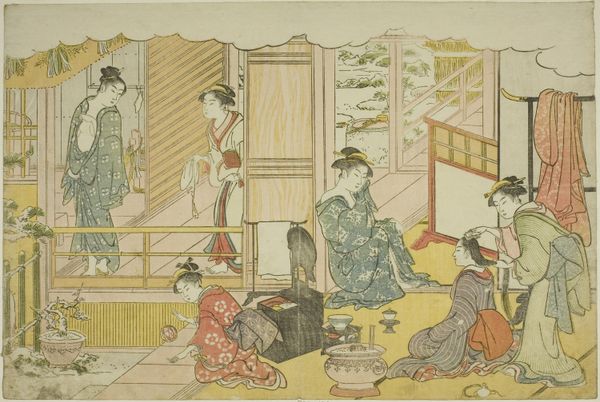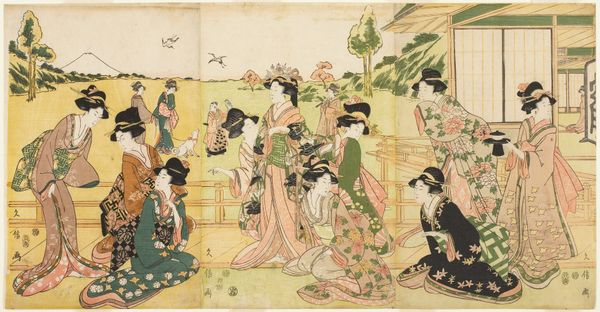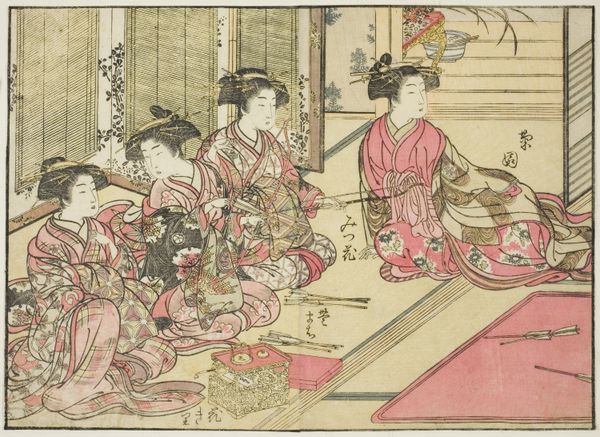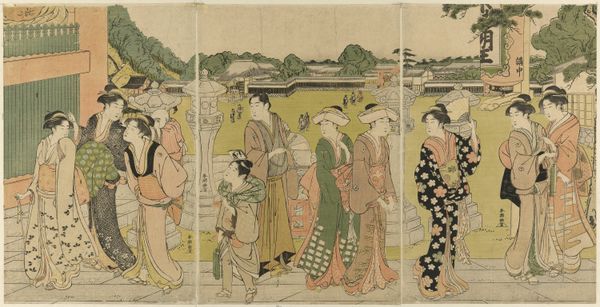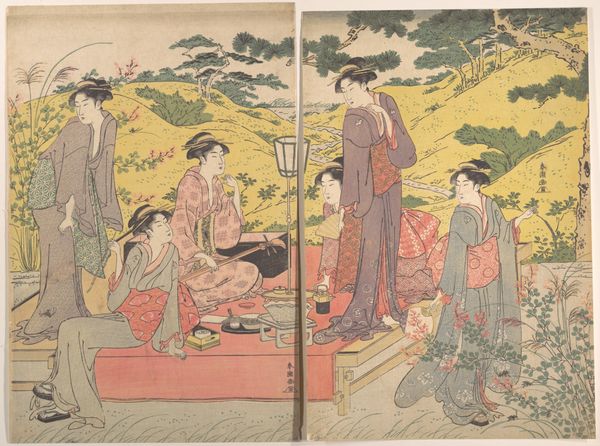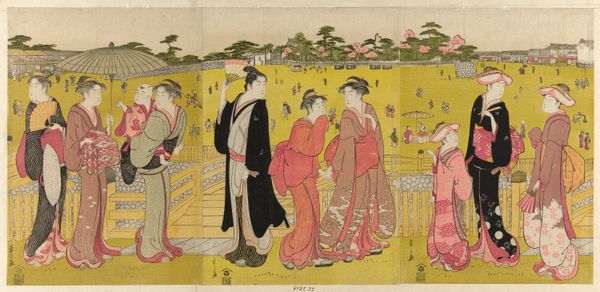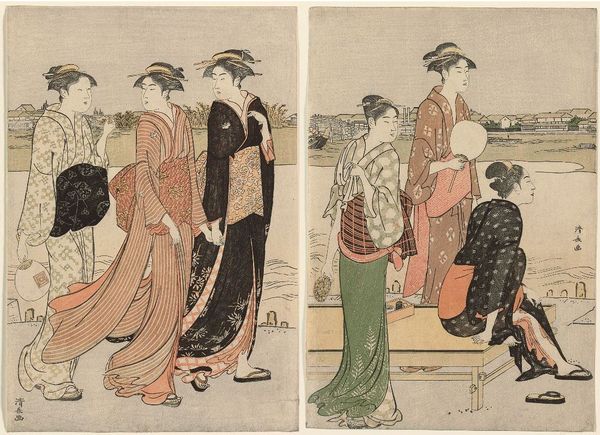
print, woodblock-print
#
portrait
# print
#
asian-art
#
landscape
#
ukiyo-e
#
woodblock-print
#
genre-painting
Dimensions: 38 × 51.4 cm
Copyright: Public Domain
Editor: So, this woodblock print is called *Women Boarding a Pleasure Boat*, by Katsukawa Shuncho, from around the 1780s. It's part of the Art Institute of Chicago’s collection. What strikes me is the detail in the women's kimonos, juxtaposed against the simpler landscape. What do you see in this piece, beyond its surface beauty? Curator: Beyond its aesthetic appeal, I see a reflection of the complex social dynamics of 18th-century Japan. Ukiyo-e, or "pictures of the floating world," often depicted scenes of pleasure and leisure, but these images also provide a lens through which we can examine gender roles and social hierarchies. Look at the gazes, who is doing what? What statements can you make about the dynamics between these actors, by only considering their actions? Editor: It looks like there are courtesans, possibly geishas, about to board a boat for an excursion. There's a figure who seems to be a servant and maybe they're embarking on entertainment in a more private space? Curator: Precisely. These pleasure boats were spaces where social boundaries could be both reinforced and transgressed. Consider the role of the women: their elaborate kimonos and carefully arranged hairstyles signaled their profession and status. Yet, they were also participating in a culture that simultaneously celebrated and marginalized them. The print can be viewed through the lens of feminist theory, examining how women's identities were constructed and negotiated within a patriarchal society. Editor: That's fascinating. I hadn’t considered the complexities behind what appears to be simply a scene of leisure. So, by looking at art through an intersectional perspective, we can uncover the layers of power and representation that often go unnoticed? Curator: Exactly. By drawing on disciplines like philosophy and cultural studies, we can deconstruct the image and analyze how it reflects and shapes broader social narratives related to gender, class, and identity. Editor: This has totally shifted my understanding of ukiyo-e. It’s not just pretty pictures, but social commentary! Curator: Indeed. And this critical approach enhances our appreciation for the work's historical significance and its relevance to contemporary discussions about representation and social justice.
Comments
No comments
Be the first to comment and join the conversation on the ultimate creative platform.
